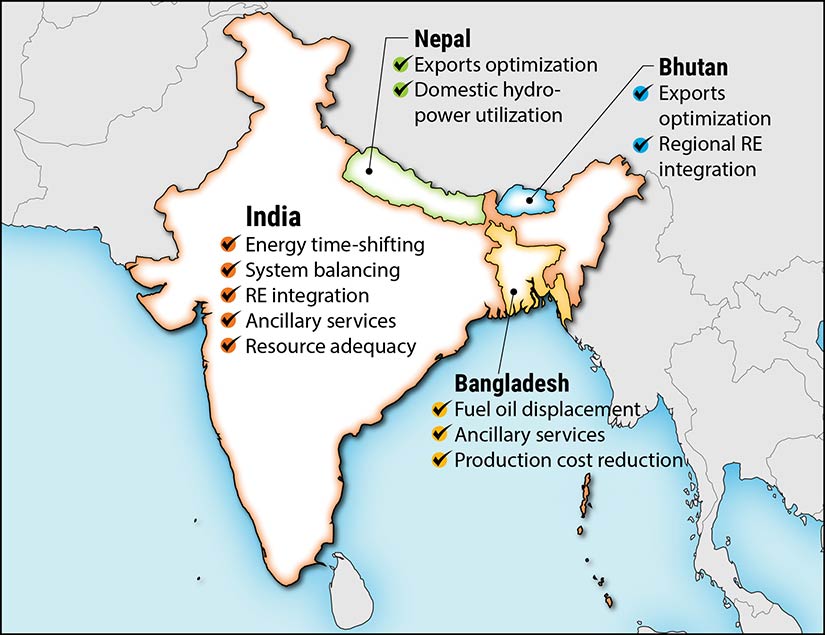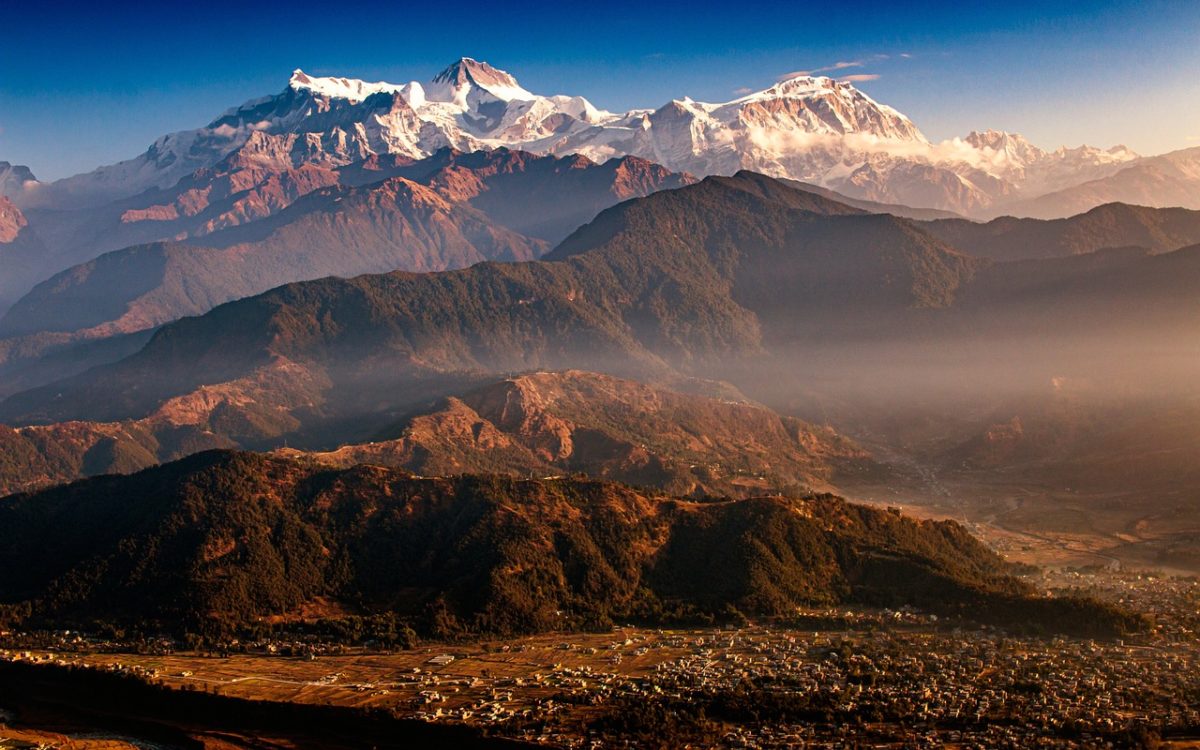Summary
- While the electrical grids of India, Bhutan, and Nepal aren’t fully synchronized as a single system, they are interconnected through various points and agreements, allowing for electricity exchange.
- As landlocked and mountainous countries, Nepal and Bhutan have limited options to industrialize, but have hydropower potential. Electricity can be an important export for both.
- The electrical grid connections facilitate the trade in electricity and contribute to regional energy security. Countries like Nepal and Bhutan export surplus electricity and import energy during periods of deficit, thereby supporting their energy needs and economic development.
- These interconnections between India, Bhutan, and Nepal have spurred significant geopolitical and domestic political issues within the region, largely shaped by strategic interests, economic dependencies, and environmental concerns.
This post was co-authored with Amit Bhandari, Senior Fellow, Energy, Investment and Connectivity at Gateway House.Details
India began cross-border electricity trade in the mid-1980s, establishing 33 kV and 132 kV interconnections from Bihar and Uttar Pradesh to Bhutan and Nepal, respectively. By April 2017, there were 12 cross-border interconnections between India and Nepal, allowing for the trade in electricity and enhancing energy security in the region. India imports electricity from Bhutan through synchronous transmission links and exports power to Nepal, among other neighbouring countries.

In terms of specific projects, Nepal and India have collaborated on the construction of the 400 kV Butwal-Gorakhpur cross-border transmission line, with the Nepal Electricity Authority and Power Grid Corporation of India signing an agreement for its development.
This transmission line is crucial for Nepal to export power to India, especially as several hydropower projects in Nepal are set to be completed in the coming years. The Butwal-Gorakhpur line, with a capacity of transporting as much as 3,500 megawatts, will complement the existing 400 kV Dhalkebar-Muzaffarpur line, the only conduit for power trade between the two countries until now. Nepal also hopes to sell electricity to Bangladesh via the Indian grid, the two countries are currently negotiating their first energy trade agreement. Bangladesh is an energy importer – it imports fuels such as coal and oil, as well as electricity. India and Bangladesh also have cross border electricity links, as well as an oil pipeline.
India started working with Bhutan on hydropower in the 1970s, with the 336 MW Chukha project commissioned in the 1980s, followed by the 1,020 MW Tala project in the early 2000s and the 720 MW Mangdechhu project in 2019. Two other hydropower projects are under construction. Bhutan exported nearly $300 million worth of hydroelectricity in 2022.
Bhutan’s integration into the regional electricity networks was further emphasized during the 23rd anniversary of the Bay of Bengal Multisectoral Technical Economic Cooperation (BIMSTEC). Member nations agreed to promote sustainable and optimal energy utilization through various means, including the inter-connection of electricity grids. Bhutan, a net exporter of electricity to India, also has the potential to trade electricity with other BIMSTEC countries through its grid connections with India.
Geopolitical and domestic analysis
These issues highlight the complex interplay of domestic politics, strategic geopolitical interests, and economic dependencies in the region, which are crucial in understanding the dynamics of electrical grid connections between India, Bhutan, and Nepal.
- India’s Strategic Interests: India’s engagement with Bhutan and Nepal in the energy sector is part of a broader strategic approach to foster partnerships and extend the benefits of its economic growth to its immediate neighbours. This is considered a counter to China’s increasing influence in the region through investments and bilateral trade enhancements. The energy cooperation, especially with Nepal, is viewed under the larger canvas of India’s commitments towards climate change and its vision of a global grid
- Market Access and Restrictions: Nepal has faced challenges in gaining full access to India’s power market, which is a crucial aspect of their bilateral energy cooperation. Despite agreements aimed at facilitating two-way power trade, India has been cautious, providing only “adequate market access” rather than “unrestricted access”.
This cautious stance is partly due to India viewing electricity as a strategic commodity, especially concerning projects involving Chinese companies. India will not purchase electricity from any China funded projects, creating issues for financial viability of China funded projects.
- Bhutan’s Hydropower Challenges: Bhutan’s ambitious goals in hydropower development have faced setbacks due to adverse geological challenges and bureaucratic delays. The transition from intergovernmental projects to joint ventures has not expedited processes as expected. This has led to time and cost overruns, raising concerns about the financial sustainability of such projects despite the high returns from electricity sales to India.
- Nepal’s Political Landscape and External Relations: Nepal’s domestic politics have been tumultuous, with allegations against high-ranking officials and shifts in foreign policy orientations impacting its external relations, including with India. The geopolitical environment under former Prime Minister KP Oli’s tenure was marked by a push on border issues with India and a visible inclination towards China, which has been a concern for India. The change in leadership to Prime Minister Deuba has seen efforts to revive and strengthen ties with India, with advancements in bilateral cooperation such as cross-border petroleum pipelines and railway.
Similar connectivity with China is not feasible given the geographical challenges. Nepal has also steered clear of debt-funded Chinese projects, unlike Sri Lanka and Pakistan. As an LDC, it has been historically eligble for grants and aid, and is reluctant to borrow. Nepal’s economic alignment will continue to be with India.
